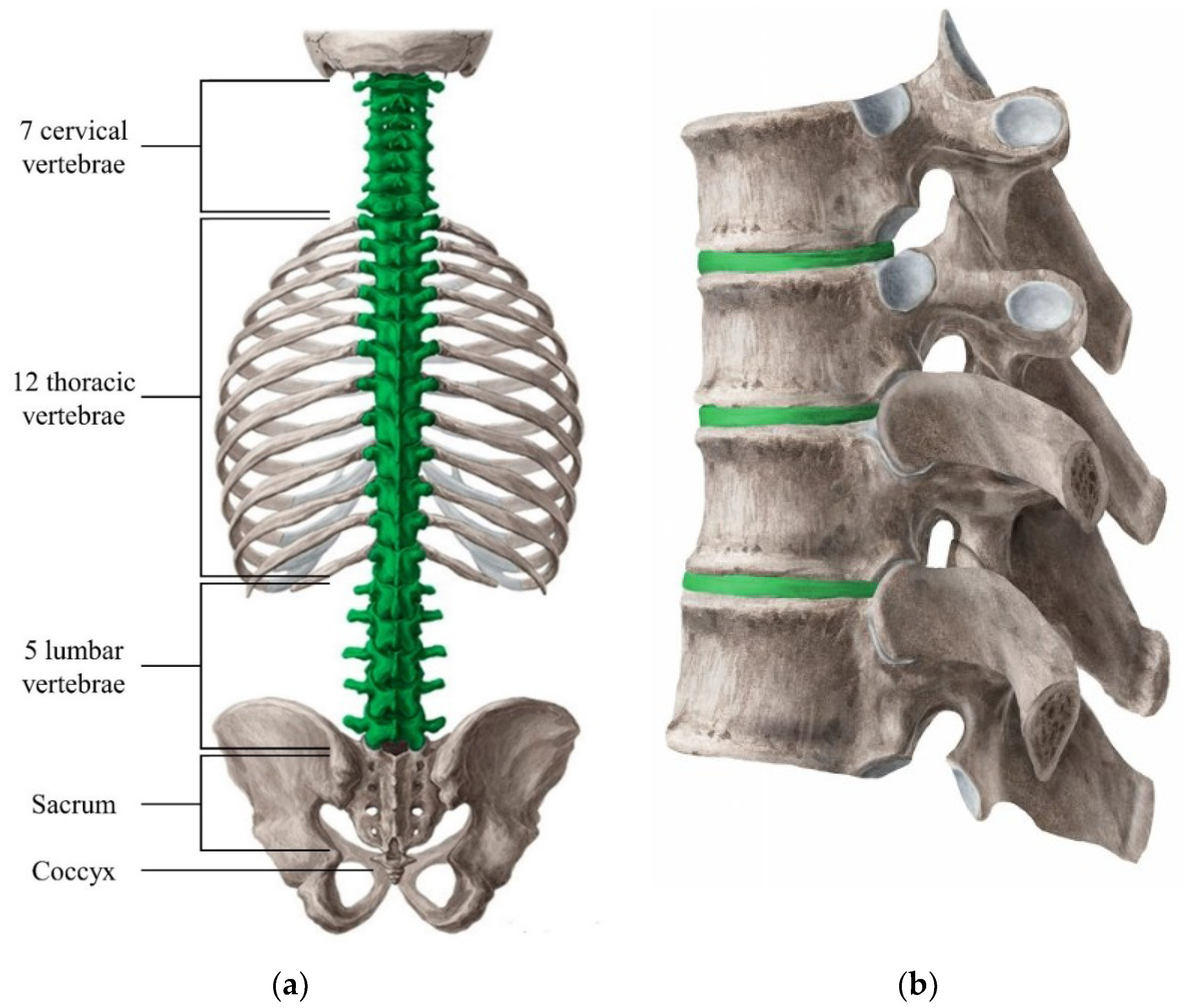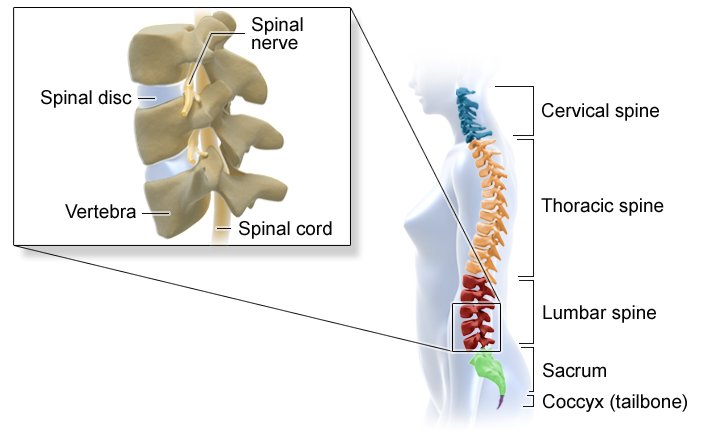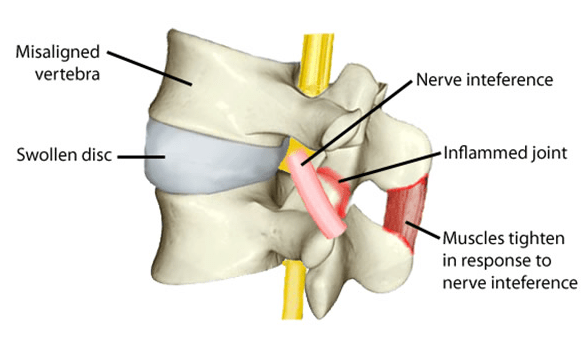Your spine is much more than just the structural support for your body—it serves as the vital link connecting your brain to every cell, tissue, and organ through the nervous system. This intricate connection forms the foundation for your body’s ability to function properly, heal efficiently, and maintain overall health. For anyone seeking to optimize their wellness, understanding the close relationship between the spine and nervous system is essential.
The spinal cord, protected by the vertebrae, acts as the main communication pathway, sending and receiving messages between the brain and the rest of the body. When this connection is strong and unhindered, your body can coordinate movement, regulate organ function, and respond effectively to external stimuli. However, spinal misalignments or injuries can disrupt this delicate communication, leading to a wide range of health issues including pain, fatigue, reduced immunity, and even emotional disturbances.
In this comprehensive guide, we will explore how the spine influences the nervous system, common problems that arise from spinal disruptions, and practical strategies to maintain spinal health. By understanding and caring for this essential connection, you can take proactive steps to restore balance, improve your body’s natural healing ability, and achieve optimal health and vitality.
Understanding the Anatomy: Spine and Nervous System Basics

The spine is made up of 33 vertebrae that protect the spinal cord—an essential part of the central nervous system. This cord runs through the spine and sends messages between the brain and body. Spinal nerves branch out from the cord, reaching organs, muscles, and tissues to control movement and sensation. Intervertebral discs cushion the vertebrae, while surrounding muscles and ligaments provide support and stability. When this system becomes misaligned or injured, nerve communication can be disrupted, leading to pain or dysfunction. Understanding this anatomy shows why spinal health is vital for a properly functioning nervous system and overall well-being.
-
The Spine: Made up of 33 vertebrae stacked in a column, the spine protects the spinal cord and supports the head and torso. It allows flexibility and movement while maintaining structural integrity.
-
The Spinal Cord: An extension of the brainstem, the spinal cord is a thick bundle of nerve fibers enclosed within the vertebral column. It acts as a communication highway transmitting signals between the brain and the rest of the body.
-
Peripheral Nervous System: Branching out from the spinal cord, these nerves extend to muscles, organs, and skin, enabling sensation, movement, and involuntary functions like heartbeat and digestion.
The central nervous system (CNS), consisting of the brain and spinal cord, governs everything from motor function to emotional responses. The spine’s role in shielding the spinal cord while allowing nerves to exit safely is crucial for maintaining nervous system health.
How the Spine Protects and Influences Nervous System Function

The vertebrae form a strong, flexible column that protects the spinal cord and supports optimal nerve function. Separated by intervertebral discs, which absorb shock and allow smooth movement, the vertebrae work with surrounding ligaments and muscles to maintain stability and alignment. Ligaments limit excessive motion, while muscles support posture and movement. When any part of this system—bones, discs, ligaments, or muscles—is injured or strained, spinal misalignments can occur. These misalignments may compress or irritate nerves, disrupting communication between the brain and body. Keeping the spine healthy and aligned is essential for proper nervous system function and overall well-being:
When this delicate system works well:
-
Nerve signals transmit smoothly without interference
-
Sensory information from the body reaches the brain accurately
-
Motor commands travel efficiently to muscles and organs
But when there’s spinal misalignment, injury, or degeneration, these functions can become compromised.
What Is Spinal Subluxation and Why Does It Matter?

Spinal subluxation is a term commonly used by chiropractors to describe a misalignment or partial dislocation of the vertebrae that disrupts normal spinal function. This condition occurs when one or more vertebrae shift out of their proper position, placing pressure or tension on nearby nerves. Because the spine houses the spinal cord—the main communication line between the brain and body—any interference along this pathway can have widespread effects on your health.
When a vertebra is misaligned, it can irritate or compress the spinal nerves that exit between the vertebrae, disrupting the normal flow of nerve signals. This interference may not always cause immediate pain, but over time it can lead to symptoms such as muscle tension, inflammation, restricted mobility, and chronic discomfort. Additionally, since the nervous system controls every organ and system in the body, spinal subluxations can also contribute to internal issues like poor digestion, low energy, weakened immunity, and hormonal imbalances.
People experiencing spinal subluxations may suffer from headaches, back or neck pain, numbness or tingling, and mood changes. Chiropractic care focuses on detecting and correcting subluxations through spinal adjustments, which help restore proper alignment, relieve nerve pressure, and improve the body’s ability to heal and function naturally.
-
Compress nerves
-
Irritate surrounding tissues
-
Disrupt the flow of nerve signals
Such disruptions can lead to a wide variety of symptoms and health problems beyond just back pain. Because the nervous system controls every function in the body, subluxations can manifest as headaches, digestive issues, mood imbalances, immune dysfunction, and more.
Signs Your Spine-Nervous System Connection Might Be Compromised
It’s important to recognize when your spine and nervous system are not communicating properly. Some common signs include chronic headaches, neck or back pain, numbness or tingling in the limbs, frequent fatigue, poor posture, and reduced mobility. You may also experience digestive issues, sleep disturbances, mood swings, or difficulty concentrating. These symptoms often point to spinal subluxations interfering with nerve signals. Because your nervous system controls every function in your body, even subtle misalignments can lead to widespread health issues. Paying attention to these warning signs and seeking chiropractic care early can help restore balance, prevent further problems, and support overall wellness:
-
Persistent neck or back pain
-
Numbness, tingling, or weakness in limbs
-
Frequent headaches or migraines
-
Digestive problems like constipation or acid reflux
-
Fatigue and low energy
-
Difficulty concentrating or “brain fog”
-
Mood swings, anxiety, or depression
-
Poor sleep quality
If you experience any combination of these symptoms, it could indicate underlying spinal nerve interference.
The Ripple Effect: How Spinal Issues Impact Overall Health
Because the nervous system governs every organ, tissue, and system in the body, a compromised spine can create a ripple effect of health challenges that extend far beyond back pain. The spinal cord, protected by the vertebrae, serves as the primary communication highway between the brain and the rest of the body. When spinal misalignments—or subluxations—interfere with this communication, the body’s ability to function and regulate itself becomes impaired.
Nerve interference caused by a misaligned spine can disrupt signals going to and from critical body systems, including the immune, digestive, respiratory, endocrine, and cardiovascular systems. This may manifest as frequent illnesses, poor digestion, hormone imbalances, high blood pressure, sleep disturbances, or chronic fatigue. Because the nervous system also plays a major role in mood regulation, spinal issues can contribute to anxiety, depression, or emotional instability.
In many cases, people don’t immediately associate these health issues with their spine. Yet, when spinal alignment is restored through chiropractic care, patients often report improvements in energy, focus, immunity, and overall well-being. Maintaining a healthy spine is not just about posture or comfort—it’s about supporting the optimal function of every system in the body, making it a cornerstone of lifelong wellness:
-
Immune System: Nerve interference can weaken immune responses, making you more susceptible to infections and slower recovery.
-
Circulatory System: Misalignments can affect blood flow, leading to inflammation and contributing to conditions like hypertension.
-
Respiratory System: Nerve disruptions may impair lung function, reducing oxygen intake and energy levels.
-
Digestive System: Nerves controlling digestion may be impaired, causing bloating, indigestion, or irregular bowel movements.
-
Musculoskeletal System: Chronic spinal misalignments cause muscle tension, joint stiffness, and reduced mobility.
How Chiropractic Care Restores the Spine-Nervous System Connection
Chiropractic care aims to restore proper spinal alignment and optimize nervous system function by correcting spinal subluxations. These misalignments can disrupt nerve communication and affect your overall health. Through gentle, targeted adjustments, chiropractors realign the vertebrae, relieving pressure on nerves and reducing inflammation. This helps the body heal naturally, improves mobility, and supports the function of vital organs and systems. Many patients experience reduced pain, better posture, increased energy, and improved mood after regular adjustments. Chiropractic care offers a safe, drug-free approach to maintaining spinal health and enhancing overall wellness, making it a valuable tool in proactive, holistic healthcare.
The benefits of chiropractic care include:
-
Improved nerve signal transmission
-
Reduced pain and inflammation
-
Enhanced mobility and flexibility
-
Better organ function and regulation
-
Improved posture and muscle balance
-
Enhanced mental clarity and mood stability
-
Increased energy and vitality
Scientific studies support chiropractic care’s ability to improve nervous system function and overall health, making it a cornerstone of holistic wellness.
Supporting Your Spine and Nervous System with Lifestyle Choices
To maintain a healthy spine-nervous system connection, consider these lifestyle habits:
-
Practice good posture: Keep your head aligned over your shoulders and avoid slouching.
-
Stay active: Regular exercise strengthens muscles that support the spine.
-
Use ergonomic furniture: Proper desk and chair setup prevent strain during long hours of sitting.
-
Manage stress: Chronic stress tightens muscles and impacts spinal health. Techniques like yoga, meditation, or breathing exercises can help.
-
Sleep well: Use a supportive mattress and pillow to keep your spine neutral during sleep.
-
Eat a nutrient-rich diet: Vitamins, minerals, and hydration are vital for nerve and bone health.
Common Myths About the Spine and Nervous System
There are many misconceptions about spinal health. Let’s debunk a few:
-
Myth: “Only people with back pain need chiropractic care.”
Fact: Chiropractic care promotes nervous system health and can benefit anyone, even without pain. -
Myth: “Spinal adjustments are dangerous.”
Fact: Chiropractic adjustments are safe, gentle, and performed by trained professionals. -
Myth: “Once your spine is damaged, it can’t be fixed.”
Fact: Many spinal issues can improve significantly with proper care and lifestyle changes.
Your spine and nervous system are the core of your body’s health and vitality. The spine protects the spinal cord, which is the main communication channel between your brain and the rest of your body. When your spine is properly aligned, nerve signals travel freely, supporting your body’s ability to function, heal, and thrive. This clear communication boosts not only physical health but also mental clarity, emotional balance, and immune strength.
However, when spinal misalignments occur—due to poor posture, injury, or stress—they can disrupt nerve flow, leading to pain, fatigue, lowered immunity, and even mood changes. Chiropractic care helps restore proper alignment and reduce nerve interference, allowing your body to perform at its best. Combined with healthy lifestyle choices like exercise, good posture, and stress management, chiropractic adjustments can help you stay balanced, energized, and resilient. Prioritizing spinal health is a powerful way to enhance your overall well-being and quality of life.
Are you ready to experience the transformative power of a healthy spine and nervous system?
At Abundant Life Chiropractic, we specialize in identifying and correcting spinal misalignments to help you achieve optimal nervous system function and overall wellness. Our compassionate team is dedicated to guiding you on your journey to vibrant health.
Call us at (952)300-8338
Book online at https://abundantlifechiropractor.com/
Take the first step toward a healthier, happier you—starting with your spine.
Frequently Asked Questions (FAQs)
Q: How often should I get chiropractic adjustments?
A: Frequency depends on your individual health needs. Some start with weekly visits, tapering to monthly or as-needed maintenance once stability improves.
Q: Will chiropractic care hurt?
A: Most patients feel relief during or immediately after adjustments. Some may experience mild soreness, similar to a workout.
Can chiropractic care help with arthritis pain?
A: Absolutely. Chiropractic adjustments improve joint mobility and reduce inflammation, providing relief for arthritis-related discomfort.
Are chiropractic adjustments painful?
A: No, adjustments are typically gentle and designed to provide relief. Chiropractors use techniques that match the patient’s comfort level.
Can chiropractic care prevent chronic pain from returning?
A: Yes, regular chiropractic care helps maintain spinal alignment, reducing the risk of recurring pain and improving overall quality of life.
Q: Is chiropractic care suitable for children and seniors?
A: Absolutely. Adjustments are tailored to be safe and effective for all ages.
Q: What can I do at home to support my spine health?
A: Maintain good posture, stay active, avoid prolonged sitting, and eat a balanced diet rich in spine-supporting nutrients.
The post The Spine-Nervous System Connection: What Every Wellness Seeker Should Know appeared first on Abundant Life Chiropractic Health Center.
from
https://abundantlifechiropractor.com/the-role-of-chiropractic-care-in-managing-chronic-pain-conditions-3/
from
https://abundantlifechiropractic0.blogspot.com/2025/06/the-spine-nervous-system-connection.html
from
https://mildredmiller0.blogspot.com/2025/06/the-spine-nervous-system-connection.html

No comments:
Post a Comment